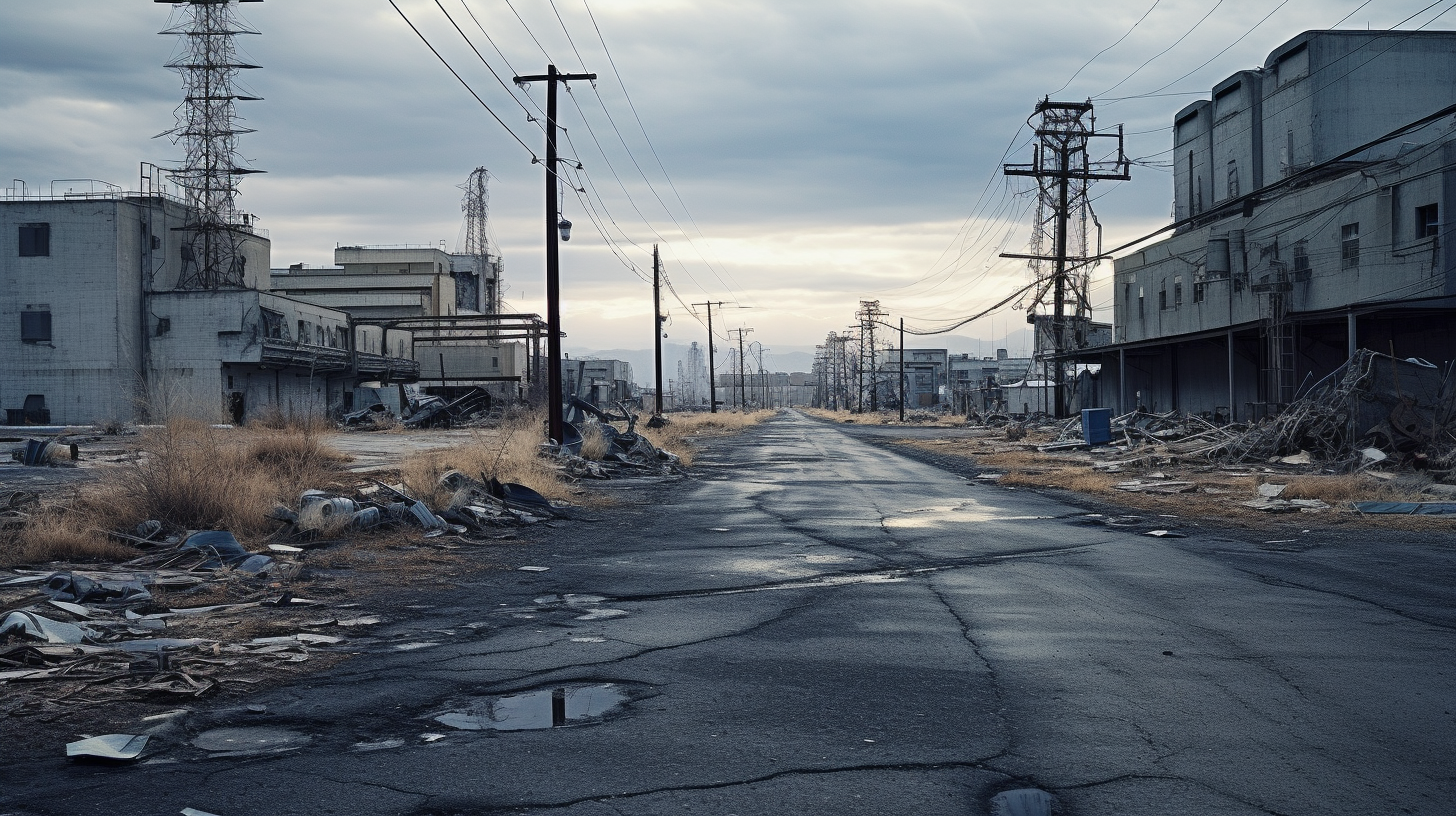The cities once teemed with the hopeful masses; now, they crumble in silence. Infrastructures, once strained under the bellowing roar of progress, stand as aching relics in the wake of humanity’s grand retreat.
Urban exodus, a term too bland for the eerie hollows that skylines have become. Where commerce, culture, and community once thrived, now only the whistling winds navigate the vacant streets and overgrown plazas.
This is not a chapter from a post-apocalyptic novel, but the stark reality in the environmental hellscape we permitted to unfold. Our story – or rather the lack thereof – takes place in the ghost towns left behind by an environmental exodus, as droves of citizens flee the once-coveted urban sprawls. But this exodus is not driven by a quest for greener pastures; it is a harrowing flight from cities choked by their own hands, the very image portrayed in yesterday’s ‘Choking on Growth – The Paradox of Urban Expansion’.
Polluted rivers, acid rain, unchecked smog, and fallout of environmental neglect turned these metropolises into modern-day mausoleums for civilization’s excess. What’s left are streets silent but for the creeping nature reclaiming concrete jungles and the memories of abandonment echoing off empty buildings.
‘Cities are no longer habitats but tombstones,’ whispers an ex-resident, now remade as a suburban tiller, turned back the clock to subsistence living. The vastness of these urban empty quarters mirrors the emptiness of promises for a better future, which we heard so often from those who led us into desolation.
Amidst this silence, there lies a call to action—a beckoning to acknowledge the frail impermanence of our constructs when faced with nature’s unforgiving reality. Yet, this is no call for hope; the Green Dystopia dictates that the hour of reversal has passed us by.
The scenes we describe are no longer confined to remote areas but manifest in the beating hearts of erst-while bustling cities. We witness the flight from San Francisco, the emptiness of London, the quiet dying of Paris. In these once icons of human achievement, we now see the ‘Expanse of Emptiness.’
Are these places mere cautionary tales left for the future or the present that we must grapple with, unable or perhaps unwilling to change? The tapestry of abandonment is not merely physical, it reflects a deeper, systemic neglect—a culture that prioritized growth over sustainability, accumulation over preservation.
As our footsteps echo in these desolate spaces, we come to terms, reluctantly, with the truth of our times. This is an era not of construction but of poignant testament; not of human glory, but of nature’s patient, persistent reclamation. Our journey continues, one not of exploration, but of reflection on the grave missteps that led to this silence.
Tomorrow, perhaps, we will speak of what rises from these shadows, of life finding a way amidst ruins. For now, we document, we remember, and we traverse the ‘Expanse of Emptiness.’
